ಕ್ರಿಸ್ Grinter ಮೂಲಕ, ಜುಲೈ 25 ರಂದು, 2011 ಈ ಸೋಮವಾರ ನಾನು ಸಂಪೂರ್ಣವಾಗಿ ಬೇರೆ ಸಾಮಾನ್ಯ Arctiinae ಹೊರಡುವ ನಾನು – ಒಂದು microlep! ಈ ಒಂದು Nepticulidae ಆಗಿದೆ, Stigmella diffasciae, ಮತ್ತು ಇದು ಒಂದು ದೊಡ್ಡ ರಲ್ಲಿ ಅಳತೆ 6 ಎಂಎಂ. ನಾನು ಈ ಚಿಟ್ಟೆ ಹಬ್ಬಿಸಲು ಕ್ರೆಡಿಟ್ ಪಡೆಯಲು ಸಾಧ್ಯವಿಲ್ಲ – ನಾನು ತೆಗೆದ nepticulids ಎಲ್ಲಾ ವಿಜ್ಞಾನ ಕ್ಯಾಲಿಫೋರ್ನಿಯಾ ಅಕಾಡೆಮಿ ಬಂದವರು ಮತ್ತು ಅವರು postdoctorate ಹುದ್ದೆಗಾಗಿ ಇಲ್ಲಿ ಆಗಿತ್ತು ಡೇವ್ ವ್ಯಾಗ್ನರ್ ಹರಡುವ.
ಮರಿಹುಳುಗಳು ಎಲೆಗಳ ಮೇಲಿನ ಸೈಡ್ ಗಣಿ Ceanothus ಮತ್ತು ಕ್ಯಾಲಿಫೋರ್ನಿಯಾದ ಸಿಯೆರಾ ನೆವಾಡಾ ತಪ್ಪಲಿನಲ್ಲಿ ಮಾತ್ರ ಇವೆ. ಕುಲದ ಮುಕ್ತವಾಗಿ ಆಗಿದೆ ನೀವು ಉತ್ತರ ಅಮೆರಿಕನ್ ಜಾತಿಗಳ ಪರಿಷ್ಕರಣೆ ಒಲವನ್ನು ವೇಳೆ ಇಲ್ಲಿ ಲಭ್ಯವಿದೆ (.ಪಿಡಿಎಫ್).
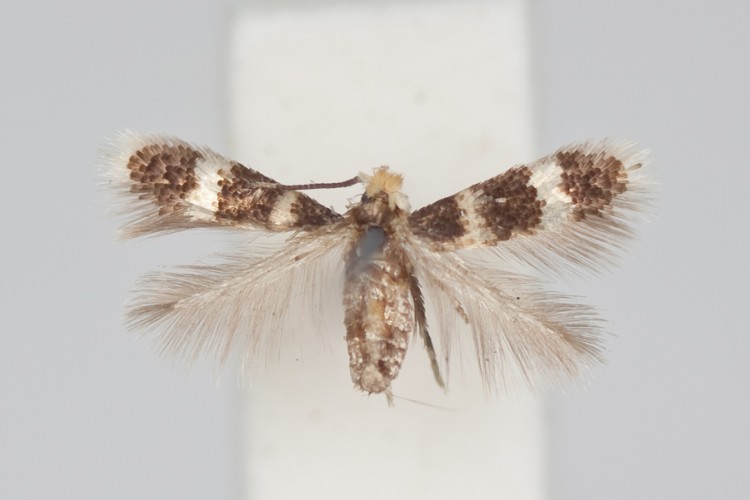 Stigmella diffasciae (Nepticulidae)
ಕ್ರಿಸ್ Grinter ಮೂಲಕ, ಜುಲೈ 22 ರಂದು, 2011 It’s been a little while since the last GOP challenge, ಆದರೆ this is a softball. I’m hoping they were just too lazy to find a more suitable image…
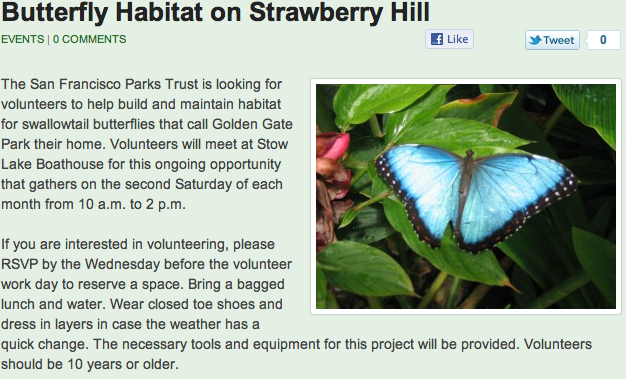
ಕ್ರಿಸ್ Grinter ಮೂಲಕ, on July 19th, 2011 What would Jesus do if he had some free time – maybe cure a disease, end a war, or feed the starving – but nah, everyone sees that coming. Why not shock them to the core – burn your face on a Walmart receipt! ಕನಿಷ್ಟಪಕ್ಷ, that’s what a couple in South Carolina believe to have found, ಒಂದು Walmart receipt with Jesus’s face on it. This isn’t exactly new or exciting, humans have a wonderful ability to recognize a face in just about anything. Jesus and other characters “appear” on random things all the time, and even in 2005 a shrine was built to the Virgin Mary around a water stain in a Chicago underpass.
Pareidolia anyone? ವಾಸ್ತವವಾಗಿ, that face looks pretty convincing, I’m not too sure this wasn’t just faked or “enhanced”. The closeups even look like there are fingerprints all over it. Since I don’t have a walmart anywhere near me or a walmart receipt on hand I can’t determine how sensitive the paper is and how easy it would have been to do – but how long do you think before it shows up on ebay? ಯಾವುದೇ ಕೂಟದಲ್ಲಿ, it looks much more like James Randi to me than Jesus (at least we actually know what Randi looks like!).
 from CNN
ಕ್ರಿಸ್ Grinter ಮೂಲಕ, ಜುಲೈ 18 ರಂದು, 2011 Over on Arthropoda, fellow SFS blogger Michael Bok shared an image of his field buddy, Plugg the green tree frog. My first thought was of a similar tree frog that haunted welcomed me everywhere I went in Santa Rosa National Park, ಕೋಸ್ಟಾ ರಿಕಾ. Needless to say, Costa Rica instills a sudden habit of double checking everything you are about to do. This species is known as the milk frog (Phrynohyas venulosa) for their copious amounts of milky white toxic secretions. One of the first stories Dan Janzen told me while while I was with him at Santa Rosa was about this species – and accidentally rubbing his eye after holding it. Thankfully the blindness and burning was only temporary.
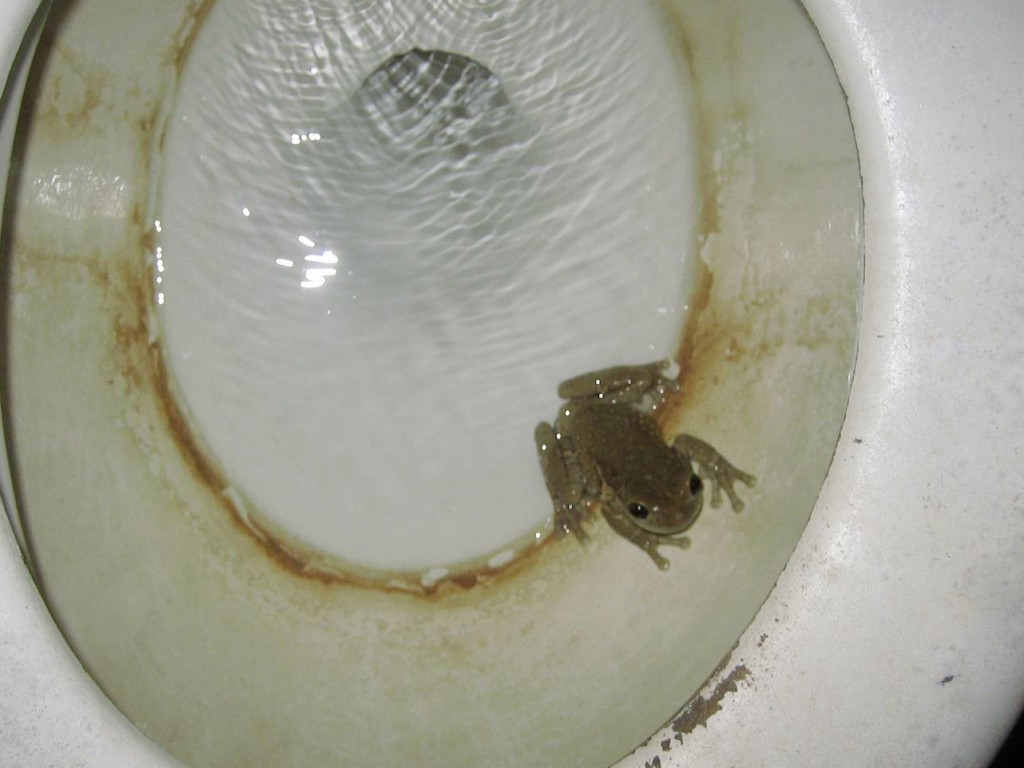 Milk Frog: Phrynohyas venulosa
ಕ್ರಿಸ್ Grinter ಮೂಲಕ, ಜುಲೈ 18 ರಂದು, 2011 I’ll keep the ball rolling with Arctiinae and post a photo today of Ctenucha brunnea. ಈ ಚಿಟ್ಟೆ ಸ್ಯಾನ್ಫ್ರಾನ್ಸಿಸ್ಕೋದಿಂದ LA ಗೆ ಬೀಚ್ ಉದ್ದಕ್ಕೂ ಎತ್ತರದ ಹುಲ್ಲುಗಳು ಸಾಮಾನ್ಯ ಮಾಡಬಹುದು – ಇತ್ತೀಚಿನ ದಶಕಗಳಲ್ಲಿ ಈ ಚಿಟ್ಟೆ ಸಂಖ್ಯೆಗಳನ್ನು ನೆಲೆಯ ವಿನಾಶ ಮತ್ತು ಬೀಚ್ ಹುಲ್ಲು ಆಕ್ರಮಣ ಕ್ಷೀಣಿಸುತ್ತಿದೆ ಆದರೂ (ಮರಳುಹುಲ್ಲು arenaria). But anywhere there are stands of giant ryegrass (Leymus condensatus) you should find dozens of these moths flying in the heat of the day or nectaring on toyon.
 Ctenucha brunnea (Erebidae: ಆರ್ಕ್ಟಿನೀ)
ಕ್ರಿಸ್ Grinter ಮೂಲಕ, on July 12th, 2011 ಸರಿ ನೀವು ಊಹಿಸಿದಂತೆ ವಿಷಯವು ನನ್ನ ಶೀರ್ಷಿಕೆ ಸೂಚಿಸುವಷ್ಟು ಆಘಾತಕಾರಿ ಅಲ್ಲ, ಆದರೆ ಗಾರ್ಡಿಯನ್ ಲೇಖನದಿಂದ ತಿರುಗಲು ನನಗೆ ಸಹಾಯ ಮಾಡಲಾಗಲಿಲ್ಲ. ವಿಜ್ಞಾನಿಗಳು ಹೇಳುವ ಯಾವುದನ್ನಾದರೂ ನಾನು ನೋಡಿದಾಗ ಅದು ನಿಜವಾಗಿಯೂ ಉಲ್ಲಾಸದಾಯಕವಾಗಿದೆ “ಬೆರಗಾದೆ”, “ತಬ್ಬಿಬ್ಬಾದ”, “ಆಘಾತವಾಯಿತು”, “ಗೊಂದಲ”, – ಇದು ಇನ್ನೊಂದು ಬಾರಿಗೆ ವಿಷಯವಾಗಿದೆ ಎಂದು ನಾನು ಭಾವಿಸುತ್ತೇನೆ… ಅದೇನೇ ಇದ್ದರೂ ಎ ನಿಜವಾಗಿಯೂ ತಂಪಾದ ಚಿಟ್ಟೆ ಹೊರಹೊಮ್ಮಿದೆ “ಸಂವೇದನಾಶೀಲ ಚಿಟ್ಟೆಗಳು” ಲಂಡನ್ನ ಬ್ರಿಟಿಷ್ ಮ್ಯೂಸಿಯಂನಲ್ಲಿ ಪ್ರದರ್ಶನ – ದ್ವಿಪಕ್ಷೀಯ ಜಿನಾಂಡ್ರೊಮಾರ್ಫ್! ದಿ ಗಾರ್ಡಿಯನ್ ವರದಿ ಮಾಡಿದೆ ಇಂದು ಈ ಮಾದರಿ ಪ್ಯಾಪಿಲಿಯೊ ಮೆಮನ್ ಇದೀಗ ಹೊರಹೊಮ್ಮಿದೆ ಮತ್ತು ಸಂದರ್ಶಕರ ಸಣ್ಣ ಗುಂಪನ್ನು ಸೆಳೆಯಲು ಪ್ರಾರಂಭಿಸಿದೆ. ಇವುಗಳಲ್ಲಿ ಒಂದನ್ನು ಮತ್ತೆ ಜೀವಂತವಾಗಿ ನೋಡಲು ನಾನು ಇಷ್ಟಪಡುತ್ತೇನೆ ಎಂದು ನನಗೆ ತಿಳಿದಿದೆ – ಮೃಗಾಲಯದ ಪರಿಸ್ಥಿತಿಯು ಉತ್ಸಾಹವನ್ನು ಸ್ವಲ್ಪಮಟ್ಟಿಗೆ ತೆಗೆದುಕೊಳ್ಳುತ್ತದೆ. ಇವುಗಳಲ್ಲಿ ಒಂದನ್ನು ನೋಡುವುದಕ್ಕಿಂತ ಹೆಚ್ಚು ರೋಮಾಂಚನಕಾರಿ ಎಂದು ನಾನು ಭಾವಿಸುತ್ತೇನೆ ಕ್ಷೇತ್ರದಲ್ಲಿ ವಾಸಿಸುತ್ತಾರೆ ನಾನೇ ಒಂದನ್ನು ನೆಟ್ ಮಾಡುವುದು!
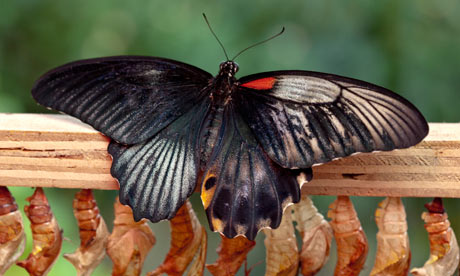
ಒಂದು ಸಣ್ಣ ವಿಷಯವು ನನ್ನ ಸಂದೇಹದ ಸಂವೇದಕಗಳನ್ನು ಟ್ರಿಪ್ ಮಾಡಿತು ಮತ್ತು ಅದು ಚಿಟ್ಟೆಗಳ ಮೇಲ್ವಿಚಾರಕರಿಂದ ತೆಗೆದುಕೊಳ್ಳಲಾದ ಲೇಖನದ ಕೊನೆಯಲ್ಲಿ ಉಲ್ಲೇಖವಾಗಿದೆ, ಬಿಳಿ ತೋಟಗಳು. “ಜಿನಾಂಡ್ರೊಮಾರ್ಫ್ ಚಿಟ್ಟೆ ಒಂದು ಆಕರ್ಷಕ ವೈಜ್ಞಾನಿಕ ವಿದ್ಯಮಾನವಾಗಿದೆ, ಮತ್ತು ಸಂಕೀರ್ಣ ವಿಕಸನ ಪ್ರಕ್ರಿಯೆಗಳ ಉತ್ಪನ್ನವಾಗಿದೆ. ಮ್ಯೂಸಿಯಂ ಮೈದಾನದಲ್ಲಿ ಒಂದು ಮೊಟ್ಟೆಯೊಡೆಯುವುದನ್ನು ಕಂಡುಹಿಡಿದಿರುವುದು ಅದ್ಭುತವಾಗಿದೆ, ವಿಶೇಷವಾಗಿ ಅವು ತುಂಬಾ ಅಪರೂಪ.”
ಬಾವಿ, ಇವುಗಳು ಹೇಗೆ ಎಂದು ನಾನು ನಿರ್ದಿಷ್ಟವಾಗಿ ನೋಡುವುದಿಲ್ಲ “ಉತ್ಪನ್ನ … ವಿಕಸನ ಪ್ರಕ್ರಿಯೆಗಳು” ಅಷ್ಟರಮಟ್ಟಿಗೆ ಎಲ್ಲಾ ಜೀವನದಲ್ಲಿ ಎಲ್ಲಾ ರೂಪಗಳು ವಿಕಾಸದ ಉತ್ಪನ್ನವಾಗಿದೆ. ಇವು ಕ್ರಿಮಿನಾಶಕ “ದೋಷಗಳು” ಅದು ತಂಪಾಗಿದೆ, ಆದರೆ ಪರವಾಗಿ ಅಥವಾ ವಿರುದ್ಧವಾಗಿ ವಿಕಸನಗೊಂಡಿರುವ ಯಾವುದನ್ನೂ ಅಲ್ಲ. ಬಹುಶಃ ಇದನ್ನು ತಳಿಶಾಸ್ತ್ರದ ಆಕರ್ಷಕ ಪ್ರಕ್ರಿಯೆ ಎಂದು ಕರೆಯುವುದು ಹೆಚ್ಚು ಪ್ರವೀಣವಾಗಿರುತ್ತದೆ (ಲೇಖನವು ವಾಸ್ತವವಾಗಿ ನಿಖರವಾಗಿ ವಿವರಿಸುತ್ತದೆ). ಸಹ – ಚಿಟ್ಟೆಗಳು ವಯಸ್ಕರಾಗಿ ಹೊರಹೊಮ್ಮುತ್ತವೆ ಮತ್ತು ಮರಿಹುಳುಗಳಾಗಿ ಹೊರಬರುತ್ತವೆ – ಆದರೆ ಅದು ನಾನು ಮೆಚ್ಚದವನಾಗಿದ್ದೇನೆ.
ಕ್ರಿಸ್ Grinter ಮೂಲಕ, ಜುಲೈ 11 ರಂದು, 2011 ಇಂದಿನ ಚಿಟ್ಟೆ ಎಸ್ಇ ಅರಿಝೋನಾ ಮತ್ತು ಮೆಕ್ಸಿಕೋ ಒಂದು ಸುಂದರ ಮತ್ತು ಅಪರೂಪದ ಜಾತಿ: Lerina ಮೂರ್ತಿವೆತ್ತಂತೆ (Erebidae: ಆರ್ಕ್ಟಿನೀ). ಇತರ ದಿನ ಹಾರುವ ಜೀವಿಗಳಂತೆ ಇದು ಪ್ರತಿಭಾಪೂರ್ಣವಾಗಿ ಬಣ್ಣದ ಮತ್ತು ಉಳಿದಿತ್ತು aposematic ಇದೆ. ಎಲ್ಲಾ ನಂತರ, ಹೋಸ್ಟ್ ಸಸ್ಯ ವೀಡ್ ಮತ್ತು ಕ್ಯಾಟರ್ಪಿಲ್ಲರ್ ಬೆರಗುಗೊಳಿಸುತ್ತದೆ ಕೇವಲ ಆಗಿದೆ (ಕೆಳಗಡೆ).
 Lerina ಮೂರ್ತಿವೆತ್ತಂತೆ (Erebidae: ಆರ್ಕ್ಟಿನೀ)
This image of an old, spread specimen hardly does the animal justice, but one lucky photographer found a female ovipositing at the very top of a hill outside of Tucson, ಅರಿಜೋನ. While you’re at it go check out some of Philip’s other great photographs on SmugMug.
 Lerina ಮೂರ್ತಿವೆತ್ತಂತೆ - Philip Kline, BugGuide As I mentioned above this moth also has an equally impressive caterpillar that feeds on Ascleapias linaria (pineneedle milkweed).
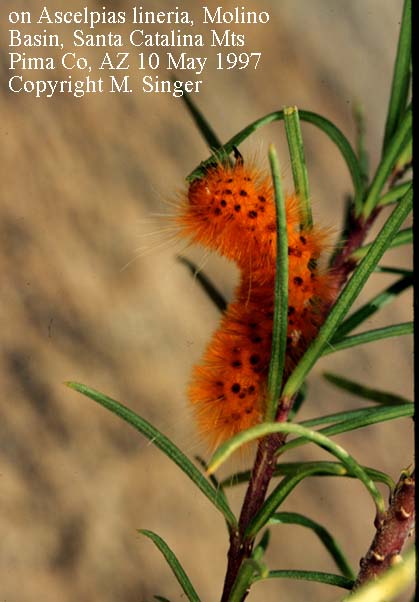
ಕ್ರಿಸ್ Grinter ಮೂಲಕ, on July 5th, 2011 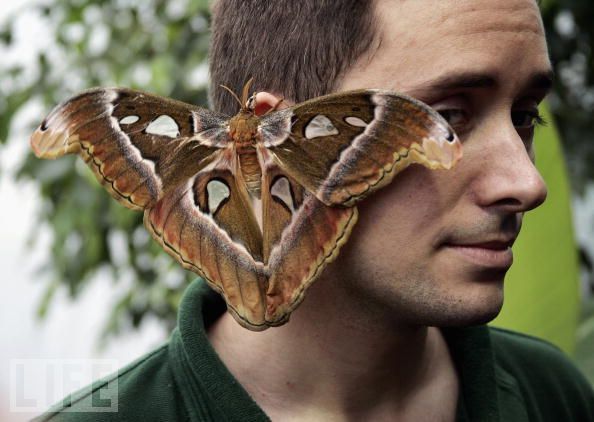
It seems like there is a preponderance of urban legends that involve insects crawling into our faces while we sleep. The most famous myth is something along the lines of “you eat 8 spiders a year while sleeping“. Actually when you google that the number ranges from 4 to 8… up to a pound? Not surprising things get so exaggerated online, especially when it concerns the ever so popular arachnophobia. I doubt the average American eats more than a few spiders over their entire lifetime; your home simply shouldn’t be crawling with so many spiders that they end up in your mouth every night! A similar myth is still a myth but with a grain of truth – that earwigs burrow into your brain at night to lay eggs. It isn’t true that earwigs are human parasites (Thankfully), but they do have a predisposition to crawl into tight, damp places. It is possible that this was a frequent enough occurrence in Ye Olde England that the earwig earned this notorious name. Cockroaches have also been documented as ear-spelunkers – but any crawly insect that might be walking on us at night could conceivably end up in one of our orifices.
I have however never heard of a moth crawling into an ear until I came across this story today! I guess a confused Noctuid somehow ended up in this boy’s ear, although I can’t help but to wonder if he put it there himself… Moths aren’t usually landing on people while they are asleep nor are they that prone to find damp, tight spots. But then again anything is possible, some noctuids do crawl under bark or leaves in the daytime for safe hiding. I even came across another story of an ear-moth form the UK (not that the Daily Mail is a reputable source).
ನೈಸರ್ಗಿಕವಾಗಿ, some lazy news sources are using file photos of “moths” instead of copying the photo from the original story. It’s extra hilarious because one of the pictures used is of a new species of moth described last year by Bruce Walsh in Arizona. ಲಿಥೋಫೇನ್ ಲೀಯೇ has been featured on my blog twice before, but never like this!
On a closing note here is a poem by Robert Cording (also where the above image was found).
Consider this: a moth flies into a man’s ear
One ordinary evening of unnoticed pleasures.
When the moth beats its wings, all the winds
Of earth gather in his ear, roar like nothing
He has ever heard. He shakes and shakes
His head, has his wife dig deep into his ear
With a Q-tip, but the roar will not cease.
It seems as if all the doors and windows
Of his house have blown away at once—
The strange play of circumstances over which
He never had control, but which he could ignore
Until the evening disappeared as if he had
Never lived it. His body no longer
Seems his own; he screams in pain to drown
Out the wind inside his ear, and curses God,
Who, hours ago, was a benign generalization
In a world going along well enough.
On the way to the hospital, his wife stops
The car, tells her husband to get out,
To sit in the grass. There are no car lights,
No streetlights, no moon. She takes
A flashlight from the glove compartment
And holds it beside his ear and, unbelievably,
The moth flies towards the light. His eyes
Are wet. He feels as if he’s suddenly a pilgrim
On the shore of an unexpected world.
When he lies back in the grass, he is a boy
ಮತ್ತೆ. His wife is shining the flashlight
Into the sky and there is only the silence
He has never heard, and the small road
Of light going somewhere he has never been.
– Robert Cording, Common Life: Poems (Fort Lee: CavanKerry Press, 2006), 29–30.
ಕ್ರಿಸ್ Grinter ಮೂಲಕ, ಜೂನ್ 30 ರಂದು, 2011 
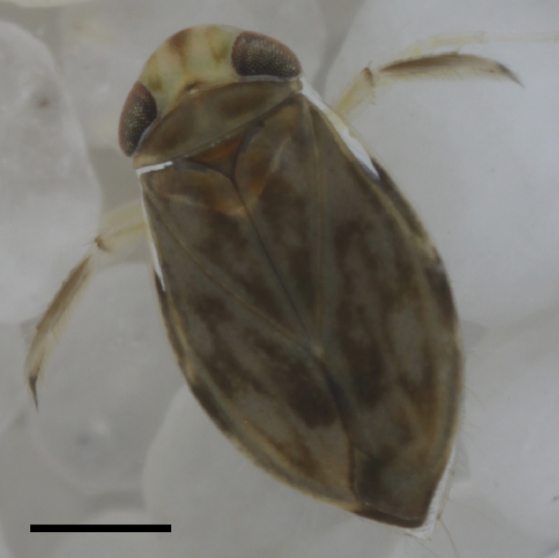 Micronecta Scholtz ಯುರೋಪಿಯನ್ ಗ್ರಾಮಾಂತರ ಬೆಟ್ಟಗಳ ಕಾಮುಕ ಕೋರಸ್ ಜೀವಂತವಾಗಿರುವ, ಕಿರಿಚುವ, ಪುರುಷ ಜಲವಾಸಿ ದೋಷಗಳನ್ನು. ಮೇಲಿನ ಕಡಿಮೆ ಕೀಟ, Micronecta Scholtz (Corixidae), ಒಂದು ದೊಡ್ಡ 2.3mm ಮತ್ತು ಇನ್ನೂ ನಲ್ಲಿ ಕ್ರಮಗಳನ್ನು ಸುಲಭವಾಗಿ ಧ್ವನಿ ಝೇಂಕರಿಸುವ / ಒಂದು ಕ್ಲಿಕ್ ಉತ್ಪಾದಿಸುತ್ತದೆ ಮಾನವ ಶ್ರವ್ಯ ನೀರಿನ ಮೇಲ್ಭಾಗದಲ್ಲಿ ಕಿವಿ. ದೃಷ್ಟಿಕೋನದಿಂದ ಎಂದು ಹಾಕಲು: ಯಾರಾದರೂ ಚರ್ಚೆ ನೀರಿನ ಕೇಳಲು ಪ್ರಯತ್ನಿಸುತ್ತಿರುವ ನಿಂತು Poolside ಅಸಾಧ್ಯವಾದುದು ಸಂದರ್ಭದಲ್ಲಿ, ಇನ್ನೂ ಈ ನಿಮಿಷ ಕೀಟ ಜೋರಾಗಿ ಸಾಕಷ್ಟು ಕ್ಲಿಕ್ ಒಂದು ಭೂಮಂಡಲದ ಸಂಧಿಪದಿಗಳ ತಪ್ಪು ಉತ್ಪಾದಿಸುತ್ತದೆ. ಅದೂ ಪ್ರಭಾವಶಾಲಿ ಧ್ವನಿ ಬೀರದಿದ್ದರೂ ನಾವು ರೆಕ್ಕೆಯ ಇತರ ಜೋರಾಗಿ ಕೀಟಗಳು ಸುತ್ತುವರಿದಿದೆ ಮಾಡಿದಾಗ, ಎಂ. scholtzi ನೀವು ಪರಿಗಣಿಸುತ್ತವೆ ಮಾಡಿದಾಗ ಗಾತ್ರದ ಮತ್ತು ಮಧ್ಯಮ ಧ್ವನಿ ನಮ್ಮ ಕಿವಿಯ ತಲುಪಲು ಪ್ರಚಾರ ಇದೆ ಒಂದು ಅದ್ಭುತವಾಗಿ ಜೋರಾಗಿ ಪ್ರಾಣಿ ಎಂದು ತಿರುಗಿದರೆ. ಸಂಖ್ಯೆಗಳನ್ನು ಕ್ಲಿಕ್ ತೀವ್ರತೆಯನ್ನು ನೀರಿನ ಮುಟ್ಟಲು ಸಾಧ್ಯವಾಗುತ್ತವೆ ಹಾಕಿ 100 ಡಿಬಿ (ಶಬ್ಧ ಒತ್ತಡ ಮಟ್ಟ, ಎಸ್ಪಿಎಲ್). ಕೀಟ ಜಗತ್ತಿನಲ್ಲಿ ನಮಗೆ ಸಂಕೋಚನ ಮತ್ತು ಈ ಸಂಗೀತವನ್ನು ಗೆ ಸಮಾನವಾಗಿರುತ್ತದೆ ಅದೇ ದೂರ ಜಾಕ್ಹಾಮರ್! ಅವಕಾಶ ಕಲ್ಪಿಸಿತು ಭೂಮಿಯ ಮೇಲೆ ಯಾವ ಆದ್ದರಿಂದ ಈ ಕಡಿಮೆ ದೋಷ ಈ ಶಬ್ದ ಮತ್ತು ಪರಭಕ್ಷಕ ಸಂಪೂರ್ಣ ವಿಶ್ವ ಅದನ್ನು ದೂರ ಪಡೆಯಲು?
ಲೇಖಕರು ಸ್ವಾಭಾವಿಕವಾಗಿ ಈ ಫಲಿತಾಂಶಗಳು ಎಷ್ಟು ಆಶ್ಚರ್ಯಕರ ಸೂಚಿಸುತ್ತಾರೆ. ಸ್ಪಷ್ಟವಾಗಿ ಗೋಚರಿಸುವುದಕ್ಕೆ ಮೊದಲ ವಿಷಯ ಅವರು ಮೂಲತಃ ಸುತ್ತಲೂ ಶಬ್ದ ಮಾಡುವ ಭೌತಿಕವಾಗಿ ಸಂಭಾವ್ಯವಾಗಿ ಯಾವುದೇ ಸಣ್ಣ ಪ್ರಾಣಿಗೆ ಎಲ್ಲಿಯಾದರೂ ಈಜುತ್ತಿದ್ದ ರಿಂದ ನೀರಿನ ಬೋಟ್ ಯಾವುದೇ ಶ್ರವಣೇಂದ್ರಿಯದ ಪರಭಕ್ಷಕಗಳಿರುವುದಿಲ್ಲ ಮಾಡಬೇಕು. ನಿಜವಾಗಿಯೂ ಈ ತುಂಬಾ ಆಶ್ಚರ್ಯವೇನಿಲ್ಲ ಅತ್ಯಂತ ನೀರಿನ ಪರಭಕ್ಷಕ ನಿಖರವಾಗಿ ದೃಷ್ಟಿ ಬೇಟೆಗಾರರು ಏಕೆಂದರೆ (ಡ್ರಾಗನ್ಫ್ಲೈ ಮರಿಗಳು, ನೀರಿನ ದೋಷಗಳನ್ನು ಮತ್ತು ಜೀರುಂಡೆಗಳು ಇತ್ಯಾದಿ…). ಇದು ಲೈಂಗಿಕ ಆಯ್ಕೆಯ ಅಂತಹ ದಿಗ್ಭ್ರಮೆಯುಂಟುಮಾಡುವ ಮಟ್ಟದ ಈ stridulatory ಕರೆಗಳ ಅಭಿವೃದ್ಧಿ ಮಾರ್ಗದರ್ಶನ ಎಂದು ಸಾಧ್ಯತೆಯಿದ್ದಲ್ಲಿ. ಈ ಕೀಟಗಳು ಅವುಗಳ ದೇಹದ ಗಾತ್ರಕ್ಕೆ ಹೋಲಿಸಿದರೆ ಎಷ್ಟು ಜೋರಾಗಿವೆ ಎಂಬುದನ್ನು ಒಮ್ಮೆ ನೀವು ಗ್ರಾಫ್ ಮಾಡಿದರೆ ಎರಡನೆಯ ಅತ್ಯಂತ ಆಶ್ಚರ್ಯಕರ ವಿಷಯ ಸ್ಪಷ್ಟವಾಗುತ್ತದೆ.. ಗ್ರಾಫ್ನ ಮೇಲ್ಭಾಗದಲ್ಲಿ ಬಾಟಲ್ನೋಸ್ ಡಾಲ್ಫಿನ್ ಇದೆ (ಟಿ. ಮೊಟಕುಗೊಳಿಸಲಾಗಿದೆ) ಅದರ ಪ್ರಸಿದ್ಧ ಸೋನಾರ್ನೊಂದಿಗೆ. ಆದರೆ ದೊಡ್ಡ ಹೊರಗಿರುವ ನಮ್ಮ ಚಿಕ್ಕ ಕೀಟವು ಕೆಳಭಾಗದಲ್ಲಿ ಎಡಭಾಗದಲ್ಲಿ ಧ್ವನಿ ಮತ್ತು ದೇಹದ ಗಾತ್ರದ ನಡುವಿನ ಅತ್ಯಂತ ಹೆಚ್ಚಿನ ಅನುಪಾತವನ್ನು ಹೊಂದಿದೆ. (31.5 ಸರಾಸರಿಯೊಂದಿಗೆ 6.9). ತಿಳಿದಿರುವ ಯಾವುದೇ ಪ್ರಾಣಿ ಹತ್ತಿರ ಬರುವುದಿಲ್ಲ. ಇತರ ಜಲವಾಸಿ ಕೀಟಗಳ ಹೆಚ್ಚಿನ ಪರೀಕ್ಷೆಯು ಹೆಚ್ಚು ಆಶ್ಚರ್ಯಕರವಲ್ಲದಿದ್ದರೂ ಇದೇ ರೀತಿಯ ಫಲಿತಾಂಶಗಳನ್ನು ನೀಡಬಹುದು.!
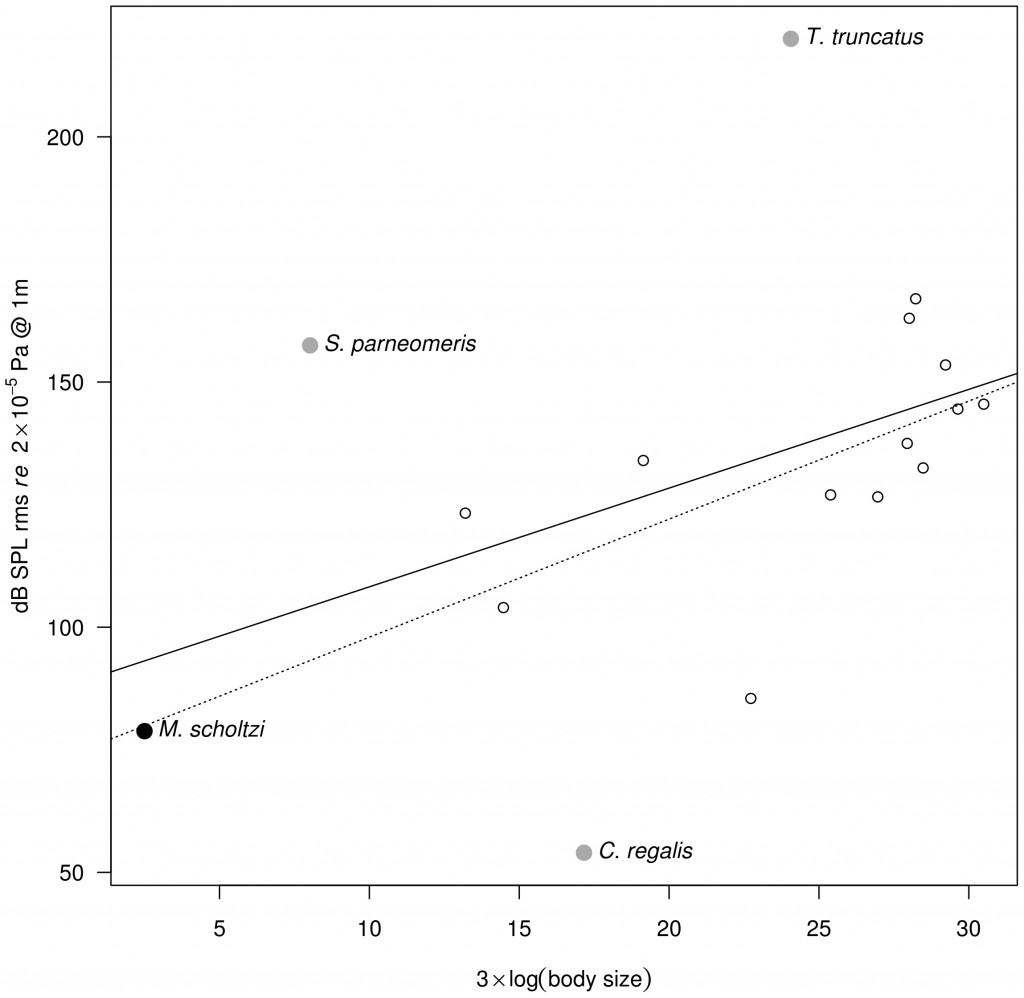
ಬಗ್ಗೆ ಹೆಚ್ಚು ನಿಖರವಾಗಿರಲು “ಕಿರಿಚುವ”, ದೋಷಗಳು (ಈ ಸಂದರ್ಭದಲ್ಲಿ ದೋಷಗಳು ಸರಿಯಾಗಿವೆ; ಕೋರಿಕ್ಸಿಡೇ ಹೆಮಿಪ್ಟೆರಾ ಗಣಕ್ಕೆ ಸೇರಿದೆ – ನಿಜವಾದ ದೋಷಗಳು) ಸ್ಟ್ರೈಡ್ಯುಲೇಟಿಂಗ್ ಆಗುವ ಸಾಧ್ಯತೆಯಿದೆ – ಗಾಳಿಯನ್ನು ಹೊರಹಾಕುವ ಬದಲು ಧ್ವನಿಯನ್ನು ಉತ್ಪಾದಿಸಲು ಎರಡು ಭಾಗಗಳನ್ನು ಒಟ್ಟಿಗೆ ಉಜ್ಜುವುದು, ಡ್ರಮ್ಮಿಂಗ್, ಇತ್ಯಾದಿ… ಲೇಖನದಲ್ಲಿ ಲೇಖಕರು ಊಹಿಸುತ್ತಾರೆ “ಬಲ ನಿಯತಾಂಕದ ಮೇಲೆ ಪಾರ್ಸ್ ಸ್ಟ್ರೈಡೆನ್ಸ್ ಅನ್ನು ಉಜ್ಜುವ ಮೂಲಕ ಧ್ವನಿಯನ್ನು ಉತ್ಪಾದಿಸಲಾಗುತ್ತದೆ (ಜನನಾಂಗಗಳ ಅನುಬಂಧ) ಎಂಟನೇ ಕಿಬ್ಬೊಟ್ಟೆಯ ವಿಭಾಗದ ಎಡ ಹಾಲೆಯಲ್ಲಿ ಒಂದು ಪರ್ವತದ ವಿರುದ್ಧ [15]”. ಅವರ ಉಲ್ಲೇಖವನ್ನು ಎಳೆಯದೆ, ಸಂಗಾತಿಯ ಆಕರ್ಷಣೆಗಾಗಿ ಕುಲದಲ್ಲಿ ಪುರುಷರಿಂದ ಸ್ಟ್ರೈಡ್ಯುಲೇಷನ್ ಉತ್ತಮವಾಗಿ ದಾಖಲಿಸಲ್ಪಟ್ಟಿದೆ ಎಂದು ತೋರುತ್ತದೆ. ಮತ್ತು ನೀವು ನಿರೀಕ್ಷಿಸಿದಂತೆ, ಸುದ್ದಿವಾಹಿನಿಗಳು ಮತ್ತು ವಿಜ್ಞಾನ ಪತ್ರಕರ್ತರು ಓದುತ್ತಾರೆ “ಜನನಾಂಗಗಳ ಅನುಬಂಧ” ಮತ್ತು ಅದನ್ನು ಶಿಶ್ನಕ್ಕೆ ಅನುವಾದಿಸಿ: ಮತ್ತು ನೀವು ಕಥೆಗಳೊಂದಿಗೆ ಕೊನೆಗೊಳ್ಳುತ್ತೀರಿ ಹೀಗೆ. ಪ್ಯಾರಾಮೀರ್ಗಳ ಕಾರ್ಯವನ್ನು ಮಂಡಿಬಲ್ಗಳಿಗೆ ಸಮಾನವಾಗಿ ಸಡಿಲವಾಗಿ ಅನುವಾದಿಸಬಹುದು, ಏಕೆಂದರೆ ಅವು ರಚನೆಗಳನ್ನು ವಿರೋಧಿಸುತ್ತವೆ. (ಸಾಮಾನ್ಯವಾಗಿ ಕೂದಲಿನೊಂದಿಗೆ ಶಸ್ತ್ರಸಜ್ಜಿತವಾಗಿದೆ) ಗ್ರಹಿಸಲು. ದಿ ಅವುಗಳ ನಿಖರವಾದ ಬಳಕೆ ಭಿನ್ನವಾಗಿರಬಹುದು ಜಾತಿಗಳು ಅಥವಾ ಆದೇಶಗಳ ಮೂಲಕ, ಆದರೆ ಅವು ಶಿಶ್ನದಲ್ಲಿ ಬಹಳ ಭಿನ್ನವಾಗಿರುತ್ತವೆ (= ಈಡೀಗಸ್) ಏಕೆಂದರೆ ಅವರು ಸಂಯೋಗವನ್ನು ಸುಲಭಗೊಳಿಸಲು ಸಹಾಯ ಮಾಡುತ್ತಾರೆ ಮತ್ತು ಯಾವುದೇ ವೀರ್ಯವನ್ನು ವಿತರಿಸುವುದಿಲ್ಲ. ಆದ್ದರಿಂದ ವಾಸ್ತವದಲ್ಲಿ ನೀವು ಜನನಾಂಗವನ್ನು ಹೊಂದಿದ್ದೀರಿ “claspers” ಒಂದು “ಕಿರುಚುವ ಭಾಗ”. ಮತ್ತು ಪಾರ್ಸ್ ಸ್ಟ್ರೈಡೆನ್ಸ್ನ ಅತ್ಯುತ್ತಮ ವಿವರಣೆಯು ಮುಗಿದಿದೆ ಹಳೆಯ ಬ್ಲಾಗ್ ಆರ್ಕಿಟೈಪ್. ಈ ರಚನೆಯನ್ನು ಹಳದಿ ಬಣ್ಣದಲ್ಲಿ ಕೆಳಗೆ ಹೈಲೈಟ್ ಮಾಡಲಾಗಿದೆ (ಮತ್ತು ಇರುವೆಯ ಹೊಟ್ಟೆಯ ಮೇಲೆ ಅಸ್ತಿತ್ವದಲ್ಲಿದೆ). ಆದರೆ ಸಂಕ್ಷಿಪ್ತವಾಗಿ – ಇದು ವಾಶ್ಬೋರ್ಡ್ಗೆ ಹೋಲುವ ಸಾಮಾನ್ಯ ತೋಡು ಮೇಲ್ಮೈಯಾಗಿದೆ. ಕೊನೆಯಲ್ಲಿ ಮೇಲೆ ಉಲ್ಲೇಖಿಸಿದ ವಾಕ್ಯವನ್ನು ಅನುವಾದಿಸಬೇಕು “ಹೊಟ್ಟೆಯ ತುದಿಯಲ್ಲಿರುವ ಎರಡು ರಚನೆಗಳು ಎರಡು ಬೆರಳುಗಳು ಸ್ನ್ಯಾಪಿಂಗ್ನಂತೆ ಒಟ್ಟಿಗೆ ಉಜ್ಜುತ್ತವೆ”.
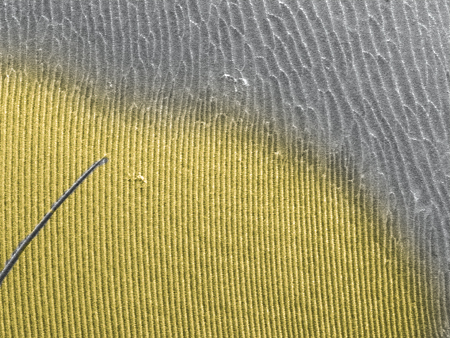 ಪಾರ್ಸ್ ಸ್ಟ್ರೈಡೆನ್ಗಳ ವಿವರ (ಹಳದಿ ಬಣ್ಣದಲ್ಲಿ) ಪ್ಯಾಚಿಕೊಂಡಿಲಾ ವಿಲ್ಲೋಸಾ ಕೆಲಸಗಾರರಲ್ಲಿ ಹೊಟ್ಟೆಯ ಟೆರ್ಗೈಟ್ನ ಮುಂದಕ್ಕೆ (ಸ್ಕ್ಯಾನಿಂಗ್ ಎಲೆಕ್ಟ್ರಾನ್ ಮೈಕ್ರೋಗ್ರಾಫ್, ರಾಬರ್ಟೊ ಕೆಲ್ಲರ್/AMNH) Continue reading The incredibly loud world of bug sex
ಕ್ರಿಸ್ Grinter ಮೂಲಕ, ಜೂನ್ 20 ರಂದು, 2011 ನಾನು ಈ ಸರಣಿ ರೋಲಿಂಗ್ ಚೆಂಡನ್ನು ಇರಿಸಿಕೊಳ್ಳಲು ಮತ್ತು ಇದು ಹೆಚ್ಚು ಸಾಮಾನ್ಯ ಪ್ರಯತ್ನಿಸಿ ಪಡೆಯಲಿದ್ದೇನೆ. ನಾನು ವಿಜ್ಞಾನ ಕ್ಯಾಲಿಫೋರ್ನಿಯಾ ಅಕಾಡೆಮಿ ಇಲ್ಲಿ ಬೃಹತ್ ಸಂಗ್ರಹ ಪ್ರತಿ ವಾರ ಹೊಸ ಜಾತಿಯ ಹೈಲೈಟ್ ಗಮನ. ಈ ನನಗೆ ಸಾಕಷ್ಟು ಸಾಮಗ್ರಿಯನ್ನು ನೀಡಬೇಕು… ನೂರು ಕನಿಷ್ಠ ಕೆಲವು ವರ್ಷಗಳ ನಲ್ಲಿ.
 Grammia edwardsii (Erebidae: ಆರ್ಕ್ಟಿನೀ) This week’s specimen is the tiger moth Grammia edwardsii. Up until a few years ago this family of moths was considered separate from the Noctuidae – but recent molecular and morphological analysis shows that it is in fact a Noctuid. The family Erebidae was pulled out from within the Noctuidae and the Arctiidae were placed therein, turning them into the subfamily Arctiinae. OK boring taxonomy out of the way – all in all, it’s a beautiful moth and almost nothing is known about it. This specimen was collected in San Francisco in 1904 – in fact almost all specimens known of this species were collected in the city around the turn of the century. While this moth looks very similar to the abundant and widespread Grammia ornata, close analysis of the eyes, wing shape and antennae maintain that this is actually a separate species. I believe the last specimen was collected around the 1920’s and it hasn’t been seen since. It is likely and unfortunate that this moth may have become extinct over the course of the last 100 years of development of the SF Bay region. Grammia, and Arctiinae in general, are not known for high levels of host specificity; they tend to be like little cows and feed on almost anything in their path. So it remains puzzling why this moth wouldn’t have habitat today, even in a city so heavily disturbed. Perhaps this moth specialized in the salt marsh areas surrounding the bay – which have all since been wiped out due to landfill for real-estate (1/3 of the entire bay was lost to fill). Or perhaps this moth remains with us even today but is never collected because it is an evasive day flying species. I always keep my eye out in the park in spring for a small orange blur…
|
ಸಂದೇಹವಾದ
|














